Have you ever wondered, why do dogs have wet noses? It’s a curious question that many pet owners ask, and the answer is more fascinating than you might think! A dog’s wet nose isn’t just an adorable feature; it serves multiple important purposes that contribute to your furry friend’s health. In this blog post, we will uncover the truth behind wet dog noses, exploring the science and biology that makes them so unique. Could it be that their wet noses help them smell better? Or maybe it’s a way to regulate their body temperature? These questions might leave you intrigued, and you’re not alone! Many people often don’t realize the connection between a dog’s nose moisture and their overall well-being. So, if you’re curious about dog health and want to learn why your canine companion’s nose is always damp, keep reading! You’ll discover how this simple yet fascinating feature plays a crucial role in their daily lives. Get ready to dive into the world of dogs and uncover the mysteries of wet noses that every dog owner should know!
The Science Behind Canine Noses: Why Are They Always Wet?
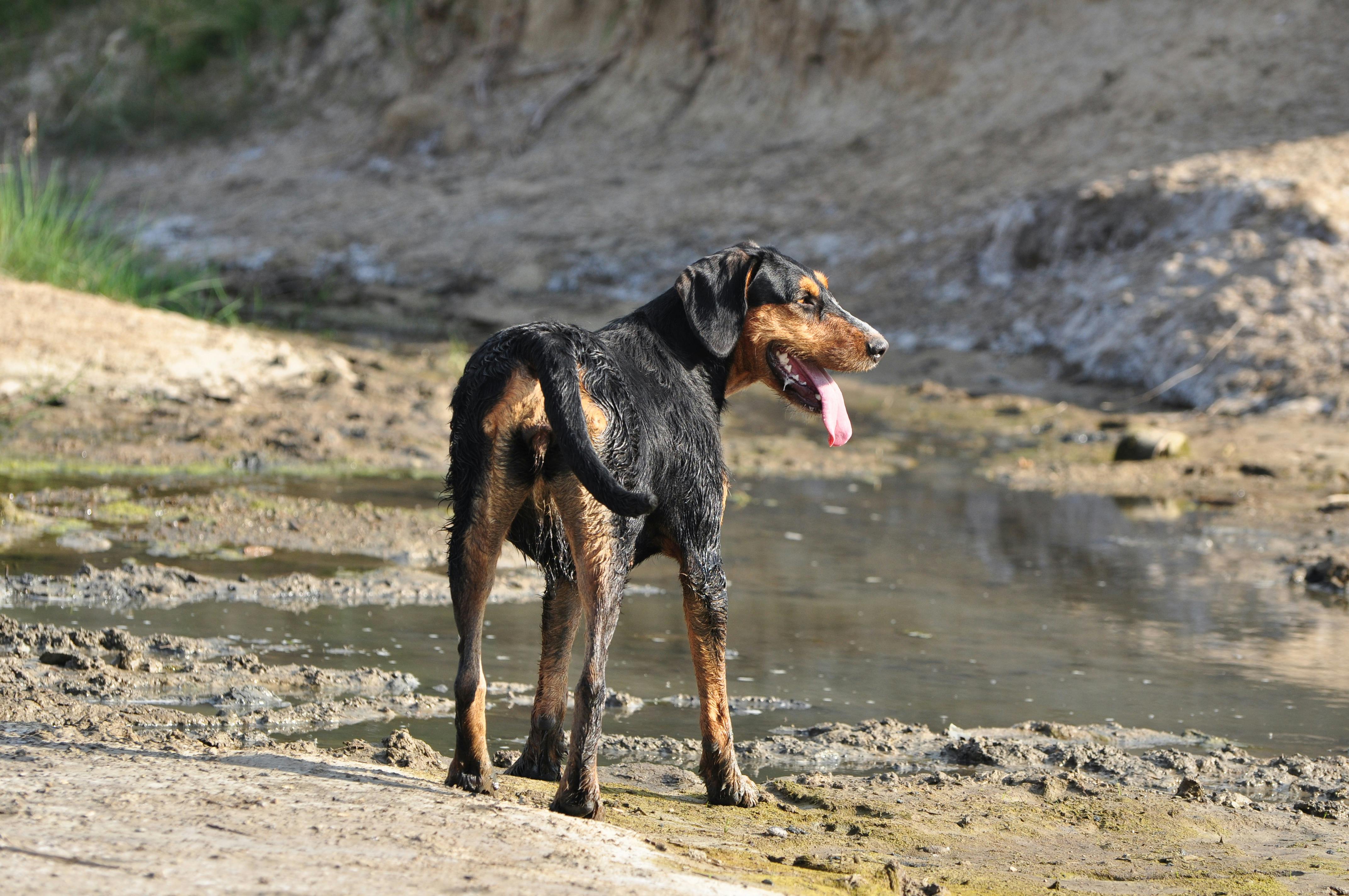
Dogs are known for their playful behavior, loyalty, and a unique feature that stands out — their wet noses. Have you ever wondered why do dogs have wet noses? It’s a question that many pet owners often ask. The answer is not just interesting, but also reveals a lot about how dogs interact with the world around them.
The Biology of a Dog’s Nose
First off, dog noses are not just wet for looks. There’s actually a science behind it. A dog’s nose is covered with a thin layer of mucus which helps to absorb scent molecules. This mucus is crucial for their sense of smell, which is estimated to be between 10,000 to 100,000 times more sensitive than that of humans.
- Scent Absorption: The wetness helps trap scent particles so that dogs can analyze them better.
- Temperature Regulation: Wet noses also help to cool down a dog’s body. Just like humans sweat, dogs can lose heat through their noses.
- Health Indicator: A wet nose is often considered a sign of good health in dogs. However, this isn’t always the case, as other factors can affect nose moisture.
The Evolutionary Advantage
Dogs have evolved to have wet noses for a reason. In their wild ancestors, a moist nose helped them survive. When hunting or foraging, being able to identify scents in the environment was crucial. A well-hydrated nose means better detection of food, predators, or potential mates.
- Tracking Prey: A wet nose could help dogs track scents over long distances.
- Social Interactions: Dogs communicate through scent. A wet nose can also help them pick up pheromones from other dogs, which is essential for social bonding.
Common Myths About Wet Noses
There are many myths surrounding why dogs have wet noses. Here are a few that are commonly believed but not necessarily true:
- A Wet Nose Means a Sick Dog: While a dry nose can indicate dehydration or illness, a wet nose is not a guarantee of good health.
- Dogs Lick Their Noses for Hydration: Many people think that dogs lick their noses to keep them wet, but the moisture primarily comes from the glands in their noses.
- All Dogs Have Wet Noses: Some breeds, like Bulldogs or Pugs, may have drier noses due to their unique anatomy.
The Importance of Nose Health
Keeping your dog’s nose healthy is important, just like any other part of their body. Issues like excessive dryness, cracks, or sores could indicate a problem. Here are some signs to look out for:
- Cracking or Bleeding: This could indicate dehydration or an underlying condition.
- Excessive Dryness: If a dog’s nose is consistently dry, it might be worth consulting a vet.
- Discharge: Any unusual discharge could signal an infection.
Fun Facts About Dog Noses
Dogs are fascinating creatures with unique features. Here are some fun facts about their noses:
- Unique Nose Prints: Just like human fingerprints, every dog has a unique nose print.
- Color Variation: A dog’s nose color can vary from pink to black, depending on breed and genetics.
- Nasal Turbinates: Dogs have complex structures in their noses called nasal turbinates, which help in scent detection.
How to Care for Your Dog’s Nose
Taking care of your dog’s nose is pretty simple. Here are some tips:
- Keep Them Hydrated: Ensure your dog has access to fresh water at all times.
- Avoid Harsh Weather: Protect your dog from extreme cold or heat, as it can dry out their nose.
- Regular Vet Checkups: Regular health checkups can help catch any issues early.
Comparing Dog Noses with Human Noses
Dogs and humans have very different nose structures and functions. Here’s a quick comparison:
| Feature | Dogs | Humans |
|---|---|---|
| Sense of Smell | 10,000-100,000 times more sensitive | Average sense of smell |
| Nose Moisture | Naturally wet | Typically dry |
| Nose Print Uniqueness | Unique to each dog | Not unique |
| Purpose of Wetness | Scent absorption and cooling | No significant purpose |
Understanding why do dogs have wet noses not only satisfies curiosity but also enriches the bond between you and your furry friend. So, the next time you see your dog with that charming wet nose, remember the incredible science and evolution behind it. Embrace the uniqueness of your pet and appreciate the small things that make them special, including their wet noses!
7 Reasons Your Dog’s Nose Is a Key to Their Health and Well-being

Dogs are often called man’s best friend, and it’s no wonder why. They bring joy, companionship, and even health benefits to our lives. But one thing that many people notice about dogs is their noses, particularly how wet they are. Have you ever wondered why do dogs have wet noses? More importantly, your dog’s nose can tell you a lot about their health and well-being. Here are 7 reasons why your dog’s nose is so important.
1. Temperature Regulation
Dogs don’t sweat like humans. Instead, they rely on their noses to help regulate body temperature. A wet nose can cool down your pup, especially when they’re panting. If your dog’s nose is dry, it might indicate that they are overheated or dehydrated. Always keep an eye on their hydration levels, especially during hot weather.
2. Sense of Smell
A dog’s sense of smell is incredibly powerful, and their wet nose plays a big role in this. The moisture helps to absorb scent particles, enhancing their ability to smell. Dogs have up to 300 million smell receptors compared to humans who only have about 6 million. This means they can detect scents at much lower concentrations. If you see your dog sniffing around a lot, it’s just their way of gathering information about their environment.
3. Health Indicator
The condition of your dog’s nose can tell you a lot about their overall health. A wet, cool nose is generally a good sign, while a dry or cracked nose can signal health issues. Some common conditions indicated by a dry nose include:
- Dehydration
- Fever
- Allergies
- Infections
If you notice a sudden change in your dog’s nose condition, it might be time to visit the vet.
4. Communication Tool
Dogs also use their noses for social interactions. By sniffing each other, they gather information about other dogs, including their health, diet, and even emotional state. This behavior is crucial for their socialization and helps them understand their place in a pack. If your dog suddenly becomes less interested in sniffing other dogs, it might be a sign of anxiety or other issues.
5. Signs of Stress or Illness
Sometimes, changes in your dog’s nose can indicate stress or illness. For example, if your dog has a normally wet nose that suddenly becomes dry, they could be feeling unwell. Additionally, if your dog’s nose is excessively wet, it might indicate other issues like nasal discharge or infections. Be observant of any other symptoms that accompany these changes, like lethargy or loss of appetite.
6. Environmental Factors
The environment plays a big role in the condition of your dog’s nose. Factors like weather, humidity, and even indoor heating can affect how wet or dry your dog’s nose is. For example, during the winter months when the air is dry, you might notice that your dog’s nose becomes drier. Ensuring your home has adequate humidity levels can help maintain your dog’s nose health.
7. Breed Differences
Different breeds can have different nose characteristics. Some breeds, like Bulldogs or Pugs, might have drier noses due to their unique facial structures. On the other hand, breeds with longer snouts, like Greyhounds, tend to have wetter noses. Understanding your dog’s breed can help you know what to expect regarding their nose condition and overall health.
Quick Facts About Dog Noses
- Dogs can detect specific scents up to 40 feet away.
- The wetness of a dog’s nose can help it detect temperature changes.
- Dogs have a special organ in their noses called the Jacobsen’s organ, which helps them sense pheromones.
- The average dog’s nose temperature is about 101 degrees Fahrenheit.
Common Misconceptions About Dog Noses
- A warm, dry nose = sick dog: Not always true, as many factors can cause a dry nose.
- All dogs have wet noses: Not every dog does, and it doesn’t necessarily indicate a health issue.
- Dogs can’t smell underwater: Wrong! Dogs can still detect scents even when submerged.
Understanding why do dogs have wet noses and what it means for your furry friend’s health can improve your bond with them. Regularly check your dog’s nose and take note of its condition. If something seems off, don’t hesitate to consult with a veterinarian. After all, our pets rely on us to keep them healthy and happy.
How a Dog’s Wet Nose Enhances Their Sense of Smell: The Amazing Facts
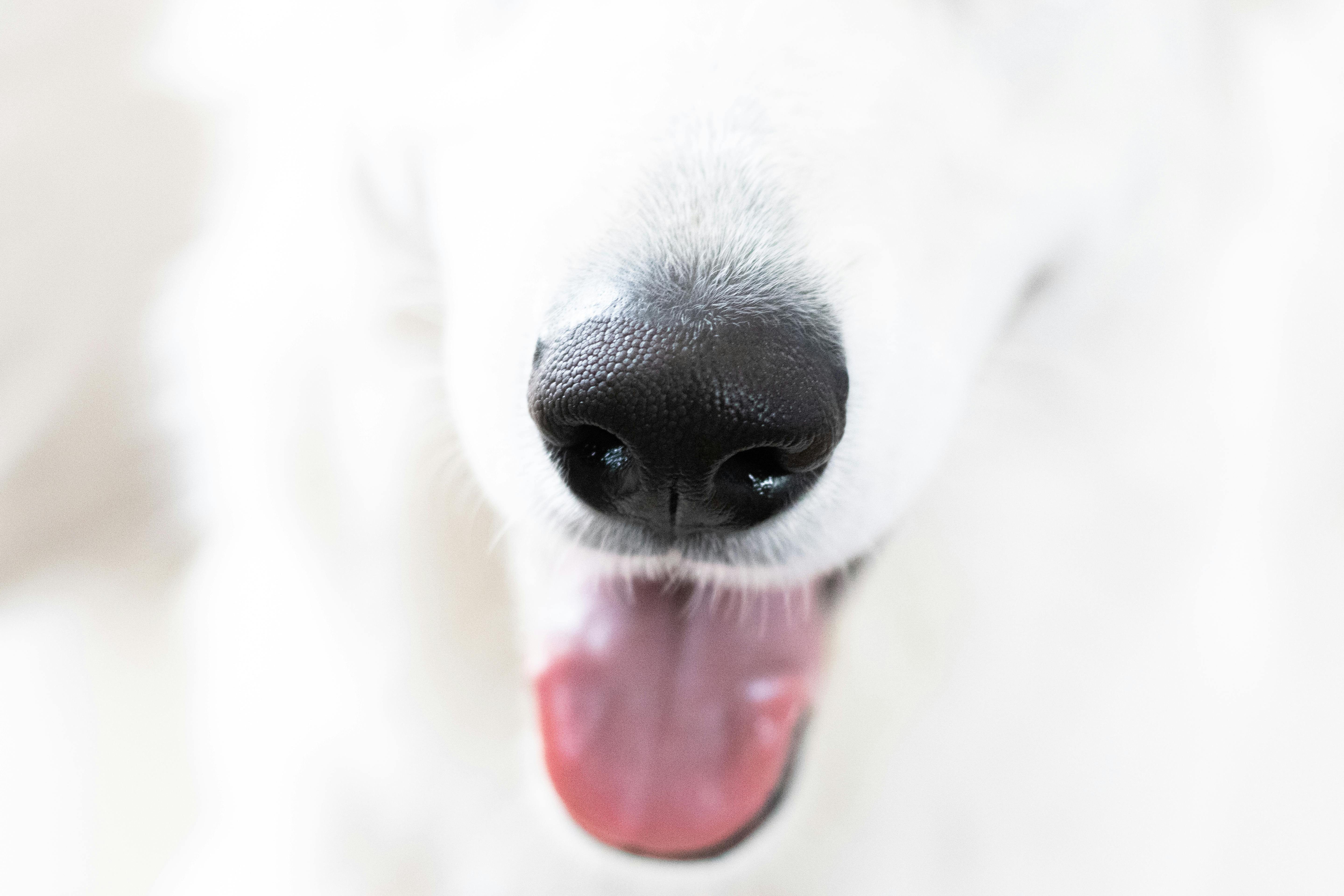
Ever wondered why dogs have wet noses? It’s a question many pet owners ask, and it turns out there’s a fascinating reason behind this curious feature. Dogs are truly remarkable creatures, and their sense of smell is one of their most incredible traits. In fact, a dog’s nose is not just an adorable part of their face; it actually plays a crucial role in how they perceive the world.
The Science Behind a Dog’s Wet Nose
A dog’s nose is moist for several reasons. The primary one is that it helps enhance their sense of smell. When a dog sniffs around, the moisture on their nose captures scent particles from the air. This moisture creates a thin layer that allows scent molecules to dissolve, making it easier for their olfactory receptors to detect and identify various smells.
Here are some amazing facts about a dog’s nose:
- Dogs have up to 300 million olfactory receptors, compared to about 6 million in humans.
- The part of a dog’s brain that processes smells is about 40 times larger than that of a human’s.
- Dogs can detect certain scents at concentrations nearly 100 million times lower than what humans can.
Why Is Moisture Important?
The wetness of a dog’s nose seems to be more than just a physical trait. It actually serves many purposes:
- Enhanced Scent Detection: As mentioned, moisture helps capture and absorb scents.
- Temperature Regulation: Dogs can’t sweat like humans. Their wet noses help cool their bodies down.
- Health Indicator: A wet nose is often seen as a sign of a healthy dog. If a dog’s nose is dry, it may indicate illness or dehydration.
Historical Context of Dog Noses
Historically, dogs have been bred for various purposes, and their sense of smell has always been a valuable trait. For instance:
- Hunting: Many breeds were developed for tracking and hunting, relying on their incredible noses to locate prey.
- Search and Rescue: Nowadays, dogs are used in search and rescue operations, detecting scents of people trapped in rubble or lost in the wilderness.
- Medical Detection: Some dogs are trained to detect diseases through scent, including cancer and diabetes, showcasing their unique abilities.
Fun Facts About Dog Noses
- Unique Patterns: Just like human fingerprints, each dog’s nose print is unique. It can even be used to identify them!
- Color Variations: A dog’s nose color can vary based on breed and genetics. Some have black noses, while others might have pink or brown ones.
- Nosework: There are even sports designed for dogs that focus on their sense of smell, like scent tracking competitions.
Tips for Keeping Your Dog’s Nose Healthy
Taking care of your dog’s nose is important. Here are some practical tips:
- Hydration: Ensure your dog stays hydrated, especially in hot weather. Dehydration can lead to a dry nose.
- Check for Irritation: If your dog frequently has a dry or cracked nose, it may be time to consult a veterinarian.
- Limit Sun Exposure: Dogs can get sunburnt too! Use pet-safe sunscreen on their noses if they spend a lot of time outdoors.
The Fascinating Truth About Nose to Brain Connection
Dogs have a special ability to analyze smells. Their noses are connected to a part of their brain that is specifically dedicated to processing scents. This is why you’ll often see dogs sniffing everything when they’re outside. Their brains are working overtime, trying to make sense of the myriad of smells around them.
Comparing Dogs to Other Animals
When it comes to olfactory abilities, dogs are champions. Here’s a quick comparison:
| Animal | Olfactory Receptors |
|---|---|
| Dogs | 300 million |
| Cats | 50-80 million |
| Humans | 6 million |
| Elephants | 2,000,000 |
| Rats | 1,500,000 |
This table illustrates just how superior dogs are when it comes to their sense of smell compared to other animals, including humans.
So, the next time you wonder why dogs have wet noses, remember that it’s not just for show. It serves vital functions that enhance their ability to navigate the world, communicate with other animals, and even bond with humans. The moistness of a dog’s nose is an amazing adaptation that lets them experience life in a much richer way than we can. Dogs truly are incredible companions, with their wet noses being just one of the many features that make them special.
Wet Noses and Dog Behavior: What Your Pup’s Nose Says About Their Mood
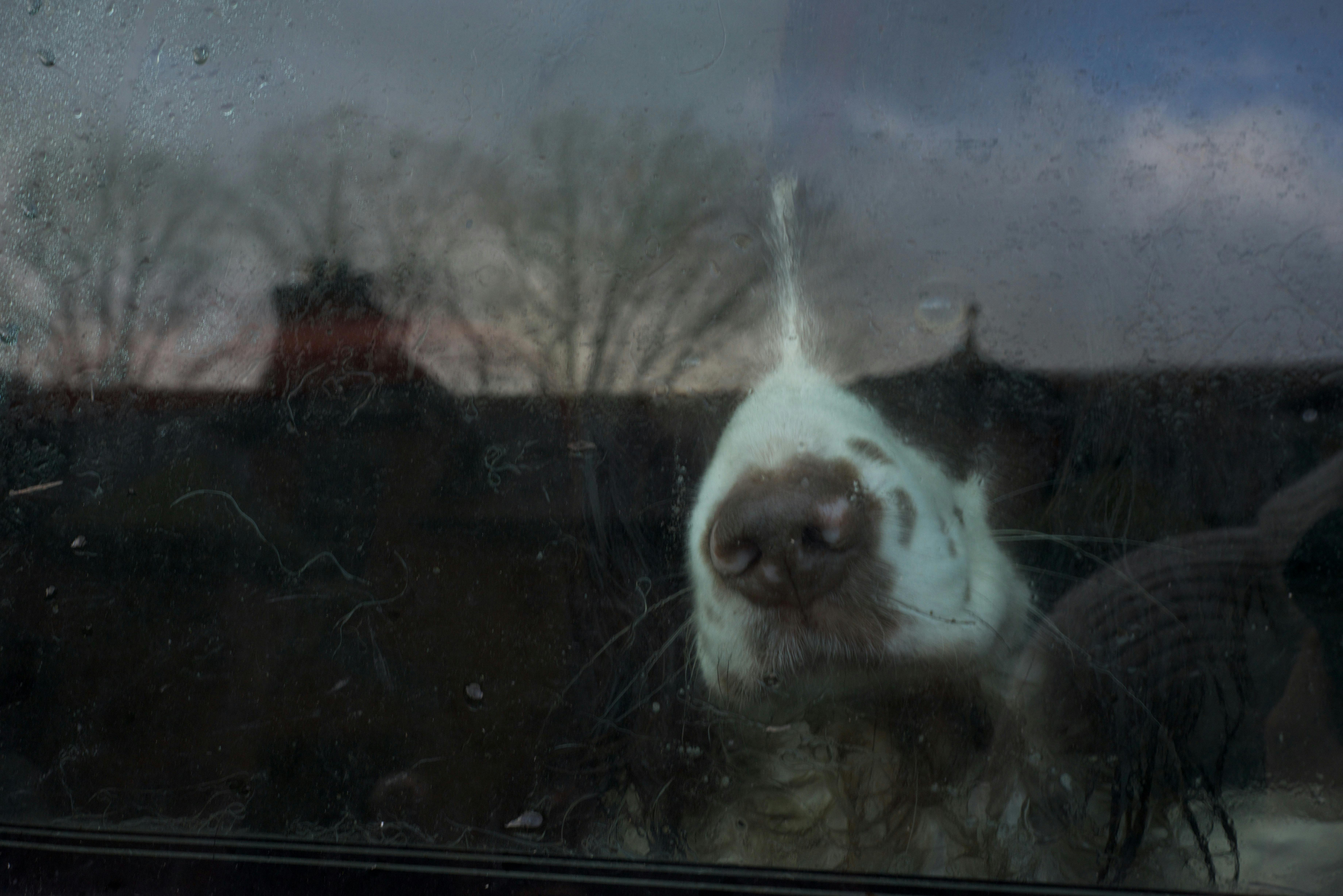
Dogs are amazing creatures, and one of their most fascinating traits is their wet noses. You might wonder, “Why do dogs have wet noses?” Well, it’s more than just a cute feature. Wet noses play a critical role in how dogs interact with their environment and convey their moods. Understanding your dog’s nose can give you insights into their feelings, health, and even behavior. Let’s explore this intriguing topic together!
The Science Behind Wet Noses
Dogs have wet noses because of a few reasons. First, the moisture helps them to sense smells better. Dogs have an incredible sense of smell; in fact, they can smell things up to 100,000 times better than humans! The wetness of their noses helps to trap scent particles, making it easier for them to detect odors.
Another reason why dogs have wet noses is because their bodies naturally produce a mucus that keeps their noses moist. This moisture helps to cool them down, since dogs don’t sweat like humans do. Instead, they rely on their noses and panting to regulate their body temperature.
What Your Pup’s Nose Says About Their Mood
You might not realize it, but the condition of your dog’s nose can tell you a lot about how they’re feeling. Here’s a quick guide to interpreting your pup’s nose:
- Warm and Dry: Could mean your dog is feeling sick or dehydrated.
- Cool and Wet: Typically a sign of a healthy, happy pup.
- Sticky or Gummy: This might indicate allergies or an infection.
- Cracked or Chapped: Could suggest dryness or even a health issue that needs attention.
The Historical Perspective
Wet noses have been a characteristic of dogs for centuries. In ancient times, dogs were domesticated for hunting, herding, and companionship. Their ability to smell played a vital role in these activities, and having a wet nose was essential for effective scent tracking.
Throughout history, different breeds have developed unique traits, but the wet nose has remained a constant feature in most dogs. The evolution of dogs from wolves meant they had to adapt to living closely with humans, and their noses became wet for practical reasons.
Fun Facts About Dog Noses
Here’s a collection of interesting facts about dog noses that you might not know:
- Dogs Have Unique Nose Prints: Just like human fingerprints, every dog has a unique nose print that can be used for identification.
- Nasal Mucus: The mucus on a dog’s nose helps to protect it from dirt and bacteria.
- Temperature Regulation: A wet nose can help dogs regulate their body temperature more effectively.
- Social Signals: Dogs use their noses to communicate with each other; a wet nose can be an invitation to play or interact.
How Dogs Use Their Noses in Daily Life
Dogs rely heavily on their noses in many daily activities. Here are some practical examples:
- Exploring the Environment: Dogs sniff around to gather information about their surroundings. They can identify other animals, humans, and even track scents over long distances.
- Social Interactions: When meeting other dogs, a sniff can be a form of greeting. Dogs often sniff each other’s noses and rear ends to learn about one another.
- Detecting Illness: Some dogs are trained to detect illnesses like cancer or diabetes by sniffing their owners. Their keen sense of smell allows them to identify changes in body chemistry that humans can’t detect.
Comparing Dog Noses to Human Noses
Here’s a quick comparison of dog noses versus human noses:
| Feature | Dog Nose | Human Nose |
|---|---|---|
| Smell Sensitivity | 100,000 times better | Standard sensitivity |
| Moisture | Naturally wet | Generally dry |
| Purpose | Scent detection, cooling | Breathing, smelling |
| Unique Prints | Yes | No |
Understanding your dog’s wet nose is just one part of being a responsible pet owner. Always pay attention to changes in their behavior and health. If you notice any unusual signs, it may be wise to consult with a veterinarian.
It’s clear that dogs’ wet noses are not just adorable features; they serve important functions that contribute to your pup’s overall well-being. So, the next time you give your dog a pat on the head, take a moment to appreciate that wet nose and all the fascinating science behind it.
The Relationship Between a Dog’s Wet Nose and Temperature Regulation
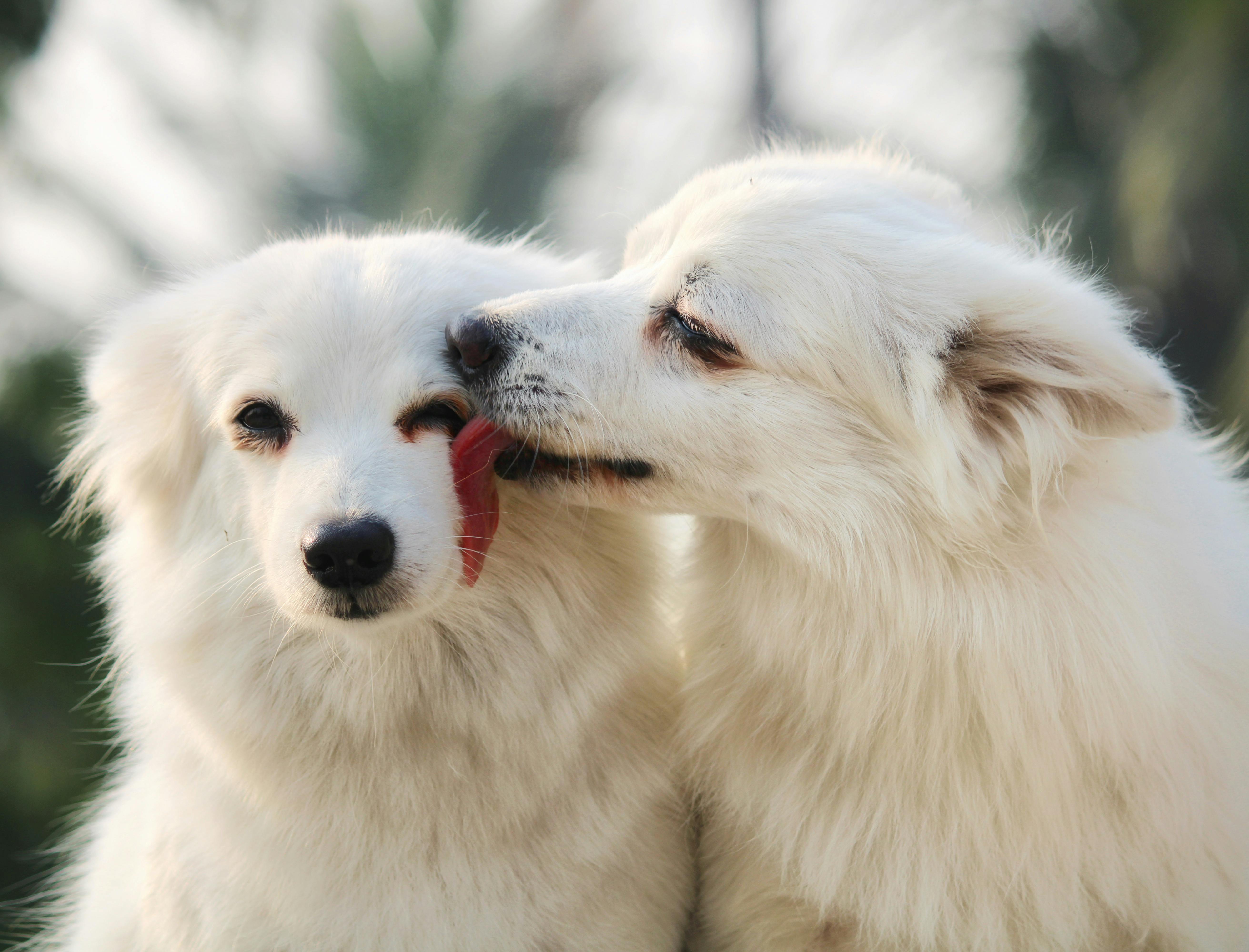
Dogs, man’s best friend, have long captivated us with their playful antics and loyal companionship. One of the most curious features of these furry companions is their wet noses. But, you ever wonder why do dogs have wet noses? It’s not just an adorable quirk; it serves several important purposes related to temperature regulation and overall health. Let’s explore the fascinating truth behind this unique trait.
The Science Behind a Dog’s Wet Nose
A dog’s nose is wet for a reason, and it’s not just because they love to splash around in puddles. The moisture on their snouts plays a crucial role in how they perceive the world. When dogs lick their noses, it helps to keep their sense of smell sensitive and sharp. This is because the moisture captures scent particles from the air, allowing them to detect smells better. It’s like having a superpower for sniffing!
Moreover, the wetness of a dog’s nose contributes to thermoregulation. Dogs don’t sweat like humans do. Instead, they rely on other means to cool down. A wet nose helps in regulating body temperature by promoting evaporative cooling. When moisture evaporates from their nose, it helps to cool down their body temperature.
Why Do Dogs Have Wet Noses?
Here’s a breakdown of reasons:
- Enhanced Sense of Smell: A wet nose helps capture scent particles, improving a dog’s ability to smell.
- Temperature Regulation: Moisture on the nose assists in cooling down a dog’s body temperature through evaporation.
- Health Indicator: A dog’s nose can indicate its health. A dry or cracked nose may signal dehydration or illness.
Historical Context of Dogs’ Noses
Dogs have been companions to humans for thousands of years, and their noses have evolved to suit their environments. Historical evidence suggest that dogs were domesticated from wolves, who also had wet noses. This trait was beneficial for survival, helping them hunt and navigate their surroundings. The wetness helps in detecting prey, and it played a vital role in their hunting strategy.
The Anatomy of a Dog’s Nose
Understanding why dogs have wet noses involves looking at their anatomy. The dog’s nose is covered with a specialized skin that includes:
- Nasal Mucosa: This moist lining helps in trapping scent particles.
- Sebaceous Glands: These glands produce oil, which keeps the nose moist.
- Blood Vessels: These help regulate temperature by bringing blood close to the surface for cooling.
Temperature Regulation in Dogs
Dogs regulate their body temperature through several mechanisms:
Panting: Dogs pant to cool themselves down. The evaporation of moisture from their tongue and lungs assists in lowering their body temperature.
Wet Nose: As mentioned earlier, the evaporation from a dog’s wet nose helps cool them down.
Paw Pads: Dogs also sweat through their paw pads, which aid in temperature regulation, albeit to a lesser extent.
What Does a Dry Nose Mean?
A dog’s nose can tell us a lot about its health. Here’s what to consider:
- Dry Nose: Not always a sign of illness. Dogs can have a dry nose when they’re sleeping or in a dry environment. However, if it’s persistently dry, it could indicate dehydration or a possible health issue.
- Cracked or Bleeding Nose: This may require a vet’s attention. It could be due to allergies, infections, or other underlying conditions.
Fun Facts About Dogs’ Noses
- Dogs have an extraordinary sense of smell, estimated to be anywhere from 10,000 to 100,000 times more acute than humans.
- The wetness of a dog’s nose can vary throughout the day based on activity levels and environmental conditions.
- Each dog’s nose print is unique, much like a human fingerprint!
Practical Tips for Dog Owners
- Hydration: Always ensure your dog has access to clean water to keep their nose moist and healthy.
- Check for Changes: Monitor your dog’s nose for any sudden changes in moisture or texture. If you notice something unusual, consult your veterinarian.
- Environmental Awareness: Be mindful of the environment your dog is in. Dry, hot conditions can lead to a dry nose.
Understanding the relationship between a dog’s wet nose and temperature regulation highlights just how remarkable these creatures really are. It’s not just about cuteness; it’s a sophisticated system that helps them survive and thrive in various environments. So next time you see your dog with that shiny, wet nose, remember the fascinating truth behind it!
Debunking Myths: Common Misconceptions About Dogs’ Wet Noses

Dogs are often seen as man’s best friend, but there still many myths and misconceptions surrounding these beloved pets. One of the most common topics of discussion is the reason why dogs have wet noses. Some people think that wet noses means a dog is healthy, while others believe it’s just a way for them to cool down. Let’s take a closer look at these ideas and uncover the fascinating truth behind why do dogs have wet noses.
The Science Behind Wet Noses
First, it’s important to understand that a dog’s nose is a complex organ. It serves multiple purposes, and its wetness plays a crucial role in a dog’s overall health and functioning. Here are some key points about why dog noses are wet:
Temperature Regulation: Dogs don’t sweat the same way humans do. They primarily regulate their body temperature through panting. A wet nose can help cool down the air they inhale, aiding in their thermoregulation.
Scent Detection: Dogs have an incredible sense of smell, and a wet nose helps enhance this ability. The moisture on their nose helps to capture scent particles from the air, allowing dogs to better detect smells.
Health Indicator: While a wet nose isn’t a definitive indicator of health, it can be a sign of hydration. Conversely, a dry nose might indicate dehydration or illness, but this is not always the case.
Common Misconceptions
There are many myths about dogs’ wet noses, which can lead to misunderstandings among dog owners. Here are some common misconceptions:
Wet Nose = Healthy Dog: Many people think if a dog’s nose is wet, it means the dog is healthy. But, this is not always true. A dog can be sick and still have a wet nose.
Dogs Sweat Through Their Noses: Some people might believe that dogs sweat through their noses to cool off. Dogs actually sweat only through their paw pads, not their noses.
Nose Color and Temperature: Another myth is that a dog’s nose color can indicate if they are sick. While some breeds have variations in nose color, it doesn’t correlate with their health.
Historical Context
Historically, dogs have been companions to humans for thousands of years. Their wet noses have fascinated people throughout the ages. In ancient cultures, people believed that a dog’s nose could sense the presence of spirits or detect changes in the environment. Though those notions have faded, the curiosity about the physiological reasons behind wet noses remains.
Fun Facts About Dogs’ Noses
Dogs have about 220 million scent receptors in their noses, compared to a human’s 5 million. This makes their sense of smell incredibly powerful.
The shape of a dog’s nose also varies widely among breeds. For example, bloodhounds have long, droopy noses that assist in tracking scents, while pugs have short snouts.
Dogs can detect certain diseases like cancer or diabetes through their sense of smell. They can sense chemical changes in human bodies, making them useful in medical diagnosis.
Why Wet Noses Matter
Understanding why dogs have wet noses can help owners take better care of their pets. Here are some practical examples:
Monitoring Health: If a dog’s nose suddenly becomes dry or cracked, it may be time to visit a vet. Regular checks can help catch health issues early.
Temperature Regulation: When it’s hot outside, ensure your dog has access to water and shade. Observe their behavior; a wet nose can mean they’re trying to cool down.
Scent Training: If you’re interested in training your dog in scent work, knowing how their nose works can help you understand their capabilities better.
Summary
In summary, dogs’ wet noses serve essential functions related to their health, temperature regulation, and sense of smell. The common myths surrounding them can often lead to confusion among dog owners. Understanding the truth behind these misconceptions can aid in providing better care for our canine companions.
Next time you see a dog with a wet nose, remember this fascinating truth and appreciate the intricate biology that makes our furry friends so special. Their wet noses are not just a quirky trait; they are a vital part of what makes dogs so unique and beloved.
Why Do Dogs Have Wet Noses? Exploring Evolutionary Benefits
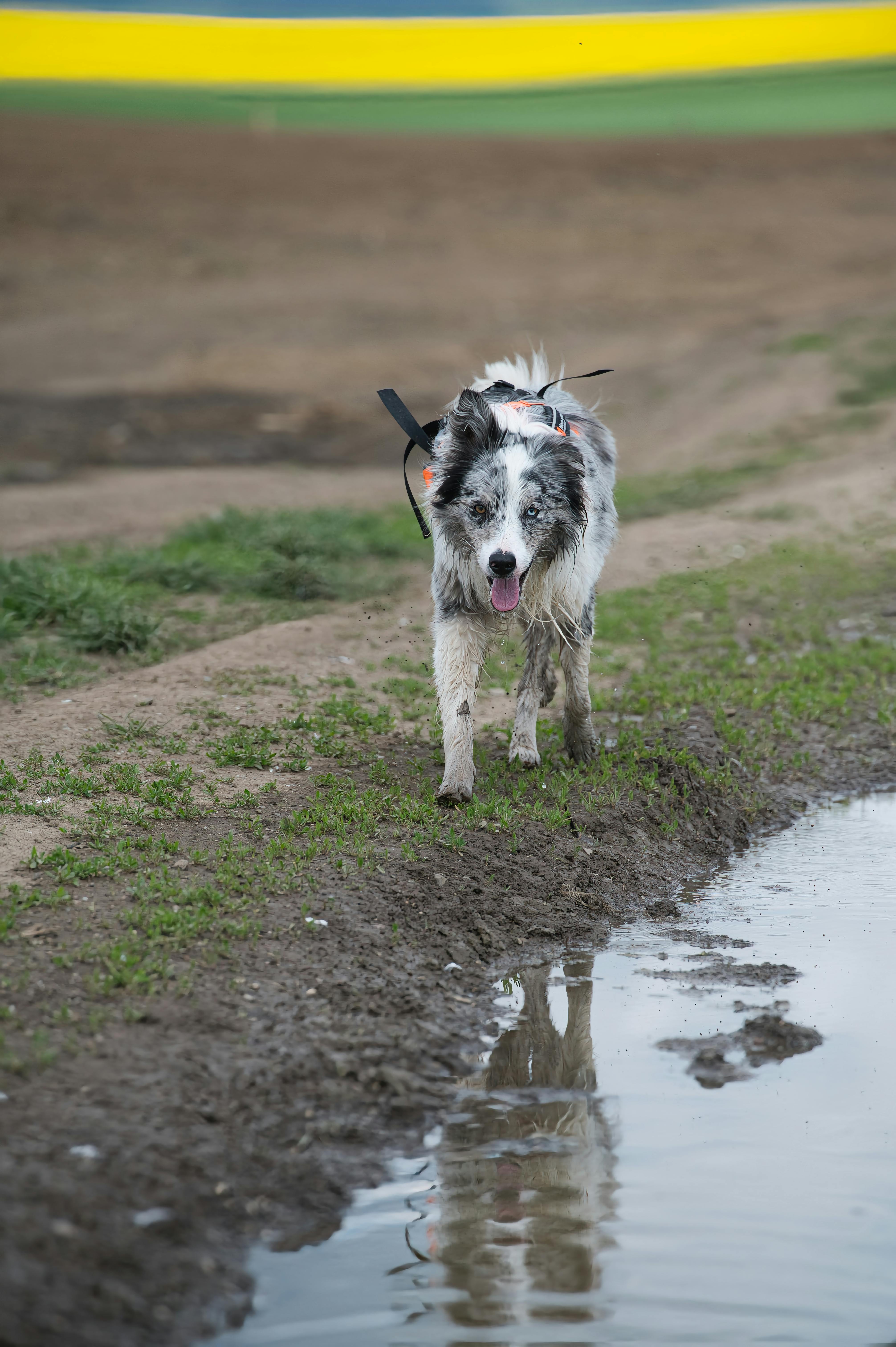
Have you ever wondered, why do dogs have wet noses? It’s a question that many dog owners ask, and the answer is not just a simple biological fact. There are evolutionary benefits to those moist noses that contribute to a dog’s overall health and behavior. Let’s dive into the fascinating truth behind this unique feature of our furry friends.
The Biology of a Dog’s Nose
Dogs noses are typically wet due to a thin layer of mucus that helps to enhance their sense of smell. The moisture aids in trapping scent particles, allowing dogs to detect odors more effectively. In fact, a dog’s sense of smell is estimated to be between 10,000 and 100,000 times more sensitive than a human’s!
- Mucus Production: The wetness comes from specialized glands located in a dog’s nose. These glands secrete mucus that keeps the nose moist.
- Thermoregulation: Dogs also use their noses to help regulate their body temperature. Licking their noses can cool them down.
- Sensory Enhancement: The moisture on a dog’s nose helps absorb scent chemicals, which can lead to improved olfactory perception.
Evolutionary Benefits of a Wet Nose
Throughout evolution, dogs developed wet noses for several reasons. Here are some key points to consider:
- Hunting and Survival: An enhanced sense of smell was crucial for early dogs in finding food and avoiding predators. A wet nose increases their ability to track scents.
- Communication: Dogs also use their sense of smell as a form of communication. A wet nose can indicate excitement or curiosity when encountering other animals.
- Health Monitoring: Dogs can detect health conditions in humans through their sense of smell. The moistness of their noses helps them to pick up on subtle changes in body chemistry.
Interesting Facts About Dog Noses
- Unique Patterns: Just like human fingerprints, every dog has a unique nose print that can be used for identification.
- Color Variation: The color of a dog’s nose can vary widely among breeds, ranging from black to pink, and it can change due to health conditions or environmental factors.
- Temperature Indicator: A common myth is that a dog’s nose temperature indicates their health. However, a wet nose does not always mean a dog is healthy, and a warm nose doesn’t necessarily mean they are sick.
The Role of Environment
The environment plays a significant role in a dog’s nose moisture levels. Dogs that live in dry climates may have drier noses compared to those in humid areas. Here are some environmental factors that can affect a dog’s nose:
- Humidity Levels: Higher humidity can keep a dog’s nose wetter.
- Seasonal Changes: Winter can lead to dry noses due to cold air, while summer can promote moisture.
- Hydration: Just like humans, dogs need to be well-hydrated. Lack of water can lead to dryness.
Key Takeaways About Dog Nose Health
To ensure your dog maintains a healthy wet nose, consider these tips:
- Stay Hydrated: Always provide fresh water for your dog.
- Regular Vet Checkups: Keep up with routine veterinary visits to monitor overall health.
- Nasal Care: If your dog’s nose becomes excessively dry or cracked, consult a veterinarian for advice on moisturizing options.
Comparison: Dogs vs. Other Animals
Dogs aren’t the only animals with wet noses. Let’s briefly compare them to other animals:
- Cats: Cats generally have dry noses, which doesn’t affect their hunting or communication abilities as much as it does in dogs.
- Rabbits: Rabbits also have moist noses to help with their sense of smell, similar to dogs.
- Pigs: Pigs possess wet noses too, which assist them in foraging for food.
Dogs have wet noses for great reasons, rooted in evolution and biology. Their moist noses are not just cute; they serve functional purposes that aid in their survival and communication. Understanding why dogs have wet noses can deepen your appreciation for these beloved companions. So, the next time you see your dog with that adorable, glistening nose, remember the fascinating science behind it.
The Connection Between Wet Noses and Dog Longevity: What Research Reveals

Dogs have been man’s best friend for centuries, but what’s with their wet noses? This question not only tickles the curiosity of pet owners but also draws attention to some interesting research about dog health and longevity. In this article, we’ll explore the connection between wet noses, dog longevity, and the fascinating truths behind why dogs have wet noses.
The Science Behind Wet Noses
First off, why do dogs have wet noses? The answer lies in their biology. A dog’s nose is covered in a thin layer of moisture, which helps them sense the world around them. This moisture acts as a receptor for scent particles. When a dog breathes in, the scent particles dissolve in the moisture, allowing them to process smells more effectively. Their sense of smell is about 10,000 to 100,000 times more sensitive than humans, and the wetness of the nose plays a crucial role.
- Dogs have about 300 million smell receptors, compared to humans’ 5 million.
- The wetness of a dog’s nose can help regulate their body temperature.
- It can also enhance their ability to detect pheromones, which are important for communication between dogs.
The Link Between Wet Noses and Longevity
Some studies suggest that a wet nose may indicate a healthy dog, which in turn relates to longevity. Dogs with dry noses might be suffering from dehydration or illness, meaning that a wet nose can be a sign of overall health.
Research shows that dog owners who pay attention to their pet’s health, including observing the condition of their noses, often have dogs that live longer, healthier lives. Here’s how it connects:
- Hydration: A wet nose can indicate that a dog is well-hydrated. Dehydration is a significant factor in canine health issues.
- Temperature Regulation: Wet noses help dogs cool down, which is essential in preventing heat-related illnesses.
- Scent Detection: A healthy, wet nose aids in scent detection, which is vital for a dog’s well-being and ability to engage with their environment.
Historical Context of Dog Noses
Historically, dogs have been revered for their keen senses. Ancient civilizations recognized the importance of a dog’s nose in hunting and protection. The Romans even bred certain dogs to enhance their smelling abilities, leading to the diverse breeds we see today. Interestingly, some cultures believed that a cold and wet nose was a sign of a healthy dog. This belief still persists among many dog owners today.
Comparing Wet and Dry Noses
Here’s a simple comparison between wet and dry noses in dogs:
Wet Nose Characteristics:
- Generally indicates a healthy dog.
- Helps with scent detection.
- Aids in cooling down the body.
Dry Nose Characteristics:
- Can signify dehydration or illness.
- May indicate stress or anxiety.
- Sometimes a result of environmental factors (like heat).
Practical Tips for Dog Owners
To ensure your dog keeps that wet nose, owners should take some practical steps. Here’s a handy list:
- Hydration: Always provide fresh water. Dehydrated dogs can develop dry noses, which is not a good sign.
- Regular Checkups: Routine vet visits can catch health issues early, keeping noses moist and healthy.
- Environmental Care: Protect your dog from extreme temperatures. Heat can cause noses to dry out.
- Nutrition: Feed a balanced diet that supports overall health, which can affect nose moisture.
Fun Facts About Dog Noses
- Dogs can smell diseases like cancer and diabetes due to their powerful noses.
- The average dog’s nose print is unique, similar to a human fingerprint.
- Dogs’ wet noses can help them detect changes in their owner’s mood and stress levels.
In understanding the connection between wet noses and dog longevity, pet owners can take proactive measures to ensure their furry friends live long, healthy lives. A wet nose is not just a cute trait; it’s a window into your dog’s health! By appreciating the biology behind those wet noses and taking care of your pet’s health, you can foster a strong bond and a longer life together. So next time you see your dog’s wet nose, remember there’s more than meets the eye (or the nose, in this case)!
How to Care for Your Dog’s Nose: Tips for Maintaining Healthy Moisture Levels

Taking care of your dog’s nose is super important, but many pet owners don’t think about it much. A dog’s nose is more than just a cute feature; it plays a critical role in their health and well-being. This article dives into how you can maintain your dog’s nose moisture levels and explore why dogs have wet noses in the first place.
Why Do Dogs Have Wet Noses?
Most people notice that dogs have wet noses, but not everyone knows the reasons behind it. Here’s a look at some fascinating facts about why your furry friend’s nose is often damp:
Scent Detection: Dogs have an incredible sense of smell, and their wet noses help enhance that ability. The moisture on their noses helps to capture scent particles from the air, making it easier for them to detect smells.
Temperature Regulation: Just like humans sweat to cool down, dogs use their noses to help regulate their body temperature. The moisture evaporating from the surface of their noses helps to keep them cool, especially in warm weather.
Health Indicator: A dog’s nose can actually act as a health indicator. A healthy dog typically has a moist and cool nose, whereas a dry or cracked nose might signal a health issue.
Natural Cleaning: When dogs lick their noses, they are not just being cute. The act of licking helps to clean their noses and keep them moist. This is important for overall health.
How to Care for Your Dog’s Nose
Now, let’s talk about how you can maintain those healthy moisture levels in your dog’s nose. Here’s some practical tips to keep in mind:
Hydration is Key: Make sure your dog has constant access to fresh water. Dehydration can lead to a dry nose, so it’s important that your pup stays hydrated.
Humidity Levels: If you live in a dry climate, consider using a humidifier in your home. This can help increase the moisture in the air and keep your dog’s nose from drying out.
Regular Checks: Keep an eye on your dog’s nose for any signs of dryness, cracks, or sores. If you notice any unusual changes, it might be time to consult your vet.
Avoid Harsh Chemicals: If you’re using cleaning products or fragrances in your home, make sure they are pet-safe. Strong chemicals can irritate your dog’s nose and dry out the skin.
Natural Remedies: Some dog owners find that applying a small amount of coconut oil or a vet-recommended balm can help keep their dog’s nose moisturized. Just make sure that whatever you apply is safe for dogs.
Protect from the Sun: Dogs can get sunburned, too! If your dog has a light-colored or thinly furred nose, consider using sunscreen made specifically for pets when they are outside for long periods.
Signs of Nose Problems
It’s essential to know the signs that indicate your dog’s nose might be having problems. Here are some things to watch for:
Cracking or Bleeding: If you notice any cracks or blood on your dog’s nose, it may need immediate attention from a vet.
Excessive Dryness: A consistently dry nose can indicate dehydration or other health concerns.
Discharge: If there’s any unusual discharge coming from your dog’s nose, it’s best to consult a veterinarian, as this may indicate an infection or allergy.
Changes in Color: If the color of your dog’s nose changes suddenly, this can be a sign of an underlying health issue.
The Fascinating Truth About Dogs’ Noses
The scientific community has long been fascinated by the anatomy and function of dogs’ noses. Here are some interesting comparisons and facts:
Dogs vs. Humans: While humans have about 5 million scent receptors, dogs have around 300 million! This makes their sense of smell significantly more acute.
Nose Print Identification: Just like human fingerprints, every dog has a unique nose print. This can actually be used for identification purposes.
Temperature Sensitivity: Dogs can sense changes in temperature through their noses. It’s why they often sniff around to investigate their environment.
Understanding and caring for your dog’s nose is crucial for their overall health. A moist nose is often a sign of a happy and healthy dog. So, whether you’re keeping an eye on your pup’s hydration or simply marveling at their incredible sense of smell, remember that your dog’s nose plays a vital role in their life. By taking the time to care for this unique feature, you can help ensure that your furry friend stays healthy and happy for many years to come.
Understanding Your Dog’s Body Language: What Their Wet Nose Can Tell You

Dogs are often considered man’s best friend, but did you ever think about what they trying to tell you with their body language? One of the most fascinating aspects of dog behavior is their wet noses. Many people wonder, why do dogs have wet noses? It’s not just a quirky trait; it actually serve several important functions in a dog’s life.
The Science Behind Wet Noses
First off, a dog’s nose is a complex and sensitive organ. It’s covered in a thin layer of moisture that helps them to sense the world around them. Here’s some reasons why dog noses are wet:
Enhanced Smell: A wet nose can absorb scent molecules better, allowing dogs to detect smells more effectively. This is why dogs are often used in search and rescue missions or in detecting drugs.
Cooling Mechanism: Dogs don’t sweat like humans, so they rely on their noses to help regulate their body temperature. When they pant, their wet nose helps to cool them down.
Health Indicator: A dog’s nose can also indicate its health. A healthy dog usually has a moist, cool nose, while a dry or cracked nose could signal dehydration or illness.
Historical Context of Dogs’ Noses
Dogs have evolved from wolves, and their noses have adapted over thousands of years. While wolves have wet noses to hunt and survive in the wild, domesticated dogs still retain this trait, which gives them an edge in interacting with humans and their environment. The history of dogs and their noses goes back to ancient times when they were first domesticated for hunting and guarding.
What Your Dog’s Wet Nose Can Tell You
When you see your dog with a wet nose, it’s not just a random occurrence. It can convey various signals about your dog’s emotional state and health. Below are some insights into what their wet nose can indicate:
Excitement: When a dog is happy or excited, their nose may become wetter as they pant due to increased activity levels.
Nervousness: A dog may have a wet nose when they are nervous or anxious. This is because they tend to lick their noses more when they are stressed.
Illness: If your dog’s nose suddenly becomes dry or warm, it may be time to consult a vet. Changes in nose moisture can often signal health issues.
The Role of Body Language
Understanding your dog’s body language is just as important as knowing about their wet noses. Here’s a quick guide to some common behaviors:
Tail Wagging: A wagging tail usually means a happy dog, but the position matters. A low wag can indicate submission, while a high wag can show excitement.
Ears Position: Erect ears often signal alertness, while ears that are pulled back may indicate fear or submission.
Body Posture: A relaxed body indicates comfort, while a stiff body can mean a dog is on alert or feeling threatened.
Practical Tips for Dog Owners
To better understand your dog’s behavior, consider these practical tips:
Observe: Spend time watching your dog’s interactions. Take note of their nose condition, body posture, and tail movements.
Learn About Dog Breeds: Different breeds have different traits. A Greyhound’s behavior may differ from that of a Chihuahua. Understanding breed-specific tendencies can provide insight into your dog’s behavior.
Veterinary Check-ups: Regular vet visits can help ensure that any changes in your dog’s nose or behavior are not health-related issues.
Socialization: Expose your dog to various environments and other dogs. This can help them to express themselves better and feel more secure.
Positive Reinforcement: Encourage good behavior with treats or praise, which can build a stronger bond between you and your dog.
The next time you pet your furry friend, take a moment to appreciate their wet nose and what it signifies about their health and feelings. Understanding your dog’s body language and the importance of their wet nose can enhance your relationship, making your time together more fulfilling. Embrace the quirks and characteristics that make dogs such incredible companions!
Conclusion
In conclusion, the wet noses of dogs serve several important functions that contribute to their overall health and well-being. Primarily, a moist nose enhances their sense of smell by capturing scent particles more effectively, allowing them to navigate their environment and communicate with other animals. Additionally, the moisture helps regulate their body temperature and can indicate their emotional state. While a wet nose is often considered a sign of a healthy dog, it’s essential to monitor any changes, as they can signal potential health issues. Understanding the reasons behind this unique characteristic can deepen the bond between you and your furry friend. So next time you greet your dog, take a moment to appreciate their wet nose and what it represents. If you notice any unusual changes in your dog’s nose or behavior, don’t hesitate to consult your veterinarian for peace of mind and ensure your pup stays happy and healthy.

